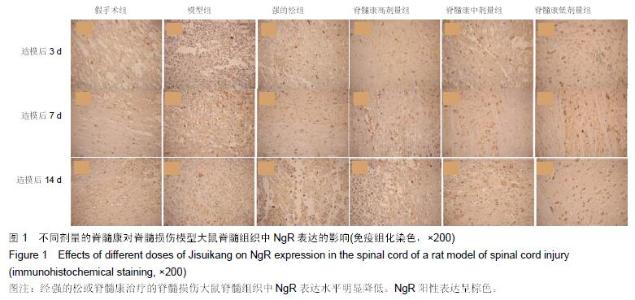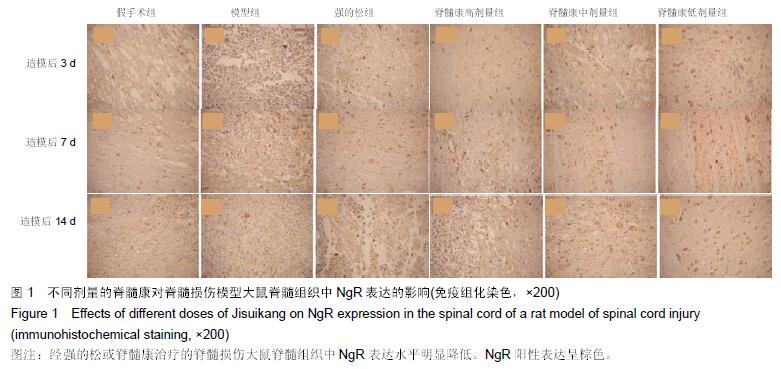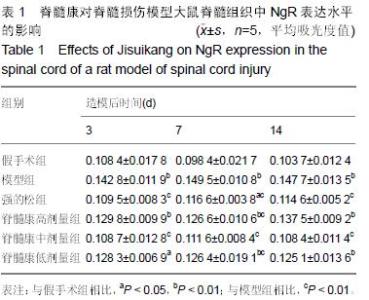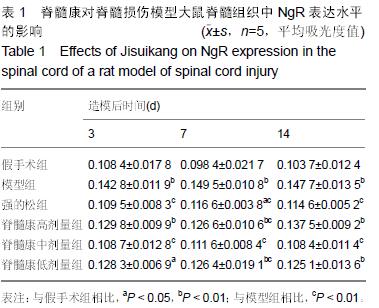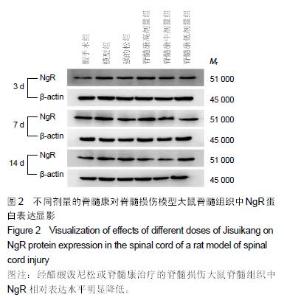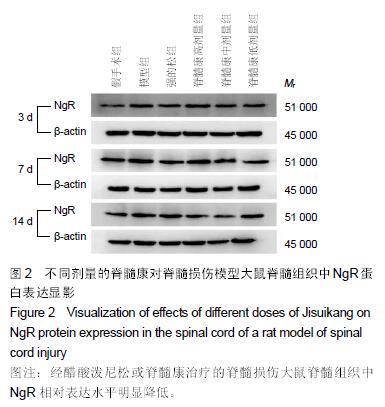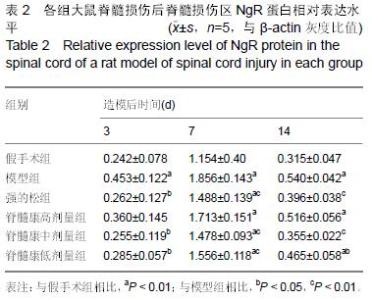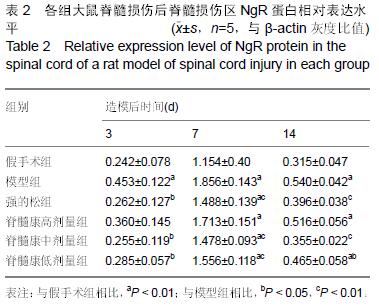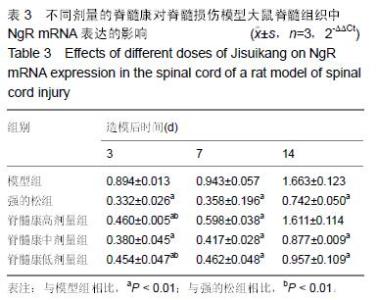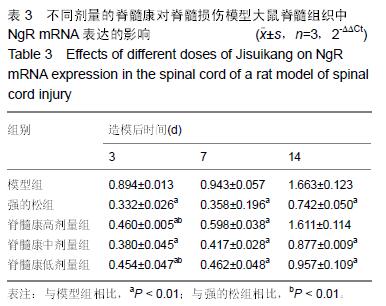| [1] Geoffroy CG, Zheng B. Myelin-associated inhibitors in axonal growth after CNS injury. Curr Opin Neurobiol. 2014;27:31-38. [2] Lang BT, Wang J, Filous AR, et al. Pleiotropic molecules in axon regeneration and neuroinflammation. Exp Neurol. 2014;258:17-23. [3] Zhu Z, Ni B, Yin G, et al. NgR expression in macrophages promotes nerve regeneration after spinal cord injury in rats. Arch Orthop Trauma Surg. 2010; 130(7):945-951. [4] Gonzenbach RR, Zoerner B, Schnell L, et al. Delayed anti-nogo-a antibody application after spinal cord injury shows progressive loss of responsiveness. J Neurotrauma. 2012;29(3):567-578. [5] Wang JW, Wu M, Huang GC. Effect of Jisuikang on kinetic dysfunction in patients after spinal injury. Chin J Integr Med. 2008;14(3):190-193. [6] 周建中,马勇,殷韶健,等.中药脊髓康治疗大鼠脊髓损伤的实验研究[J].江西中医学院学报,2009,21(2):71-74. [7] Ma Y, Zhou JZ, Yang WG, et al. Effects of Jisuikang on hemorheology and inflammatory factors in rats following spinal cord injury. Neural Regen Res. 2008; 3(11):1176-1180. [8] Allen AR. Surgery of experimental lesion of spinal cord equivalent to crush injury of fracture dislocation of spinal column: A preliminary report .J Am Med Assoc.1911;lvii (11): 878-880. [9] Khan T, Havey RM, Sayers ST, et al. Animal models of spinal cord contusion injuries. Lab Anim Sci. 1999; 49(2): 161-172. [10] Gruner JA. A monitored contusion model of spinal cord injury in the rat. J Neurotrauma. 1992;9(2):123-126; discussion 126-128. [11] Forgione N, Fehlings MG. Rho-ROCK inhibition in the treatment of spinal cord injury. World Neurosurg. 2014; 82(3-4):e535-539. [12] Pernet V, Schwab ME. The role of Nogo-A in axonal plasticity, regrowth and repair. Cell Tissue Res. 2012; 349(1):97-104. [13] Xu CJ, Xu L, Huang LD, et al. Combined NgR vaccination and neural stem cell transplantation promote functional recovery after spinal cord injury in adult rats. Neuropathol Appl Neurobiol. 2011;37(2):135-155. [14] Wang D, Zhang JJ, Yang ZX. Treatment of spinal cord injury by transplanting neural stem cells with NgR gene silencing. Zhongguo Wei Zhong Bing Ji Jiu Yi Xue. 2010; 22(1):28-31. Wang X, Duffy P, McGee AW, et al. Recovery from chronic spinal cord contusion after Nogo receptor intervention. Ann Neurol. 2011;70(5):805-821. |
